How to Build Smarter Content Systems with AI and Automation
Relato is helping content leaders shift from ad-hoc execution to engineered systems that scale. AI and automation are no longer optional — they define whether your team produces high-impact assets or gets buried in inefficiency. This article outlines a proven approach to building smarter content operations that balance technology with human expertise.
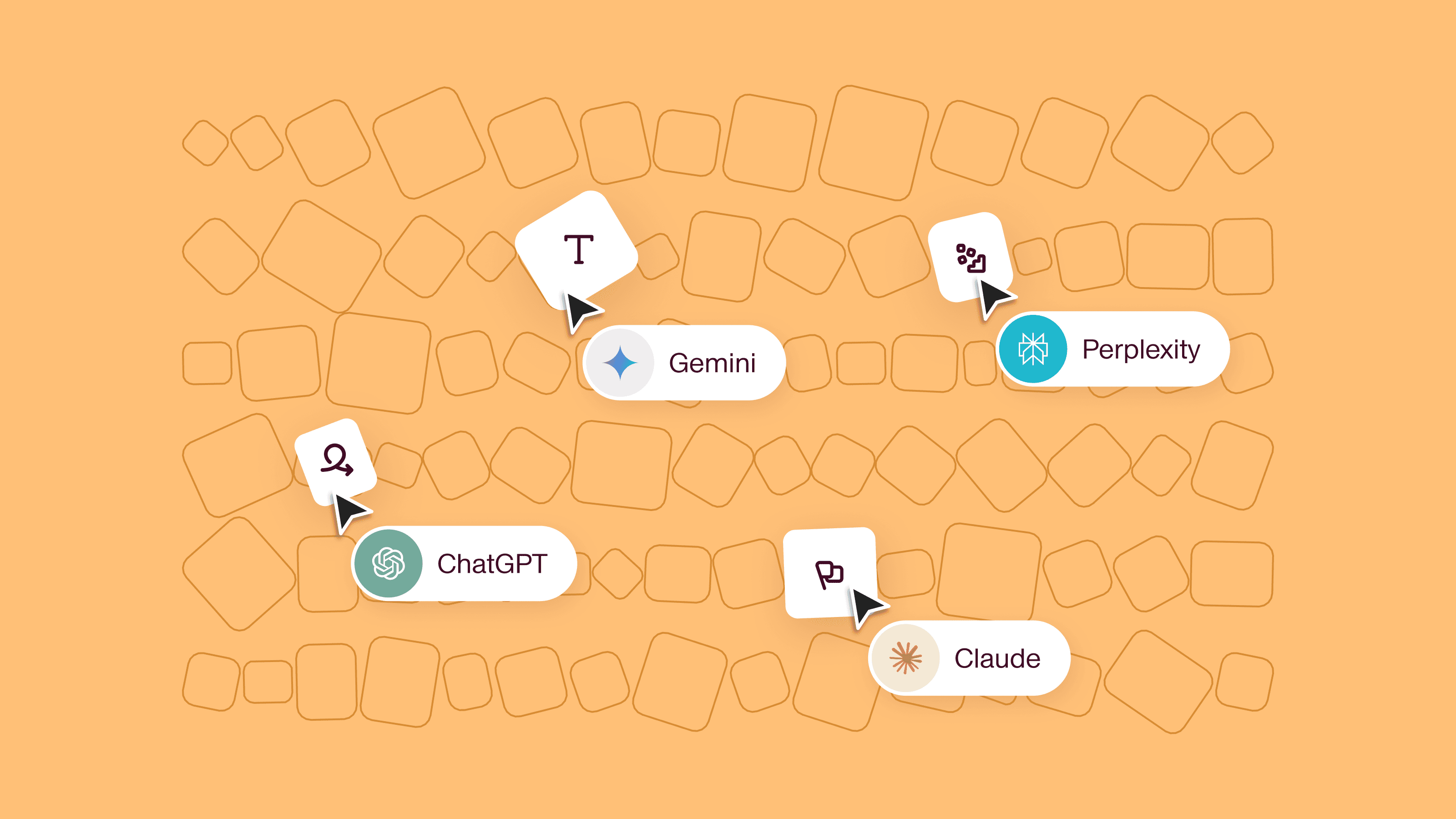
The content operations gap is widening.
On one side: teams churn out forgettable AI-generated fluff at record speeds.
On the other, sophisticated content engines produce high-impact assets with half the headcount and twice the results.
The difference isn't better prompts or fancier tools. It's something far more fundamental — operational discipline.
I’ve teamed up with Maddy Osman, an expert in AI-powered content ops, to break down how marketers use AI and automation to build scalable processes and deliver consistent value.
The case for content engineering
Your career in content marketing (and, honestly, mine too) now hinges on a simple question: Can you build systems that scale efficiently?
Content engineering — organizing how content is produced, structured, stored, and deployed — has become the new focus for progressive marketers.
It’s also reflected in modern content job descriptions, which typically require skills in AI and building workflows:
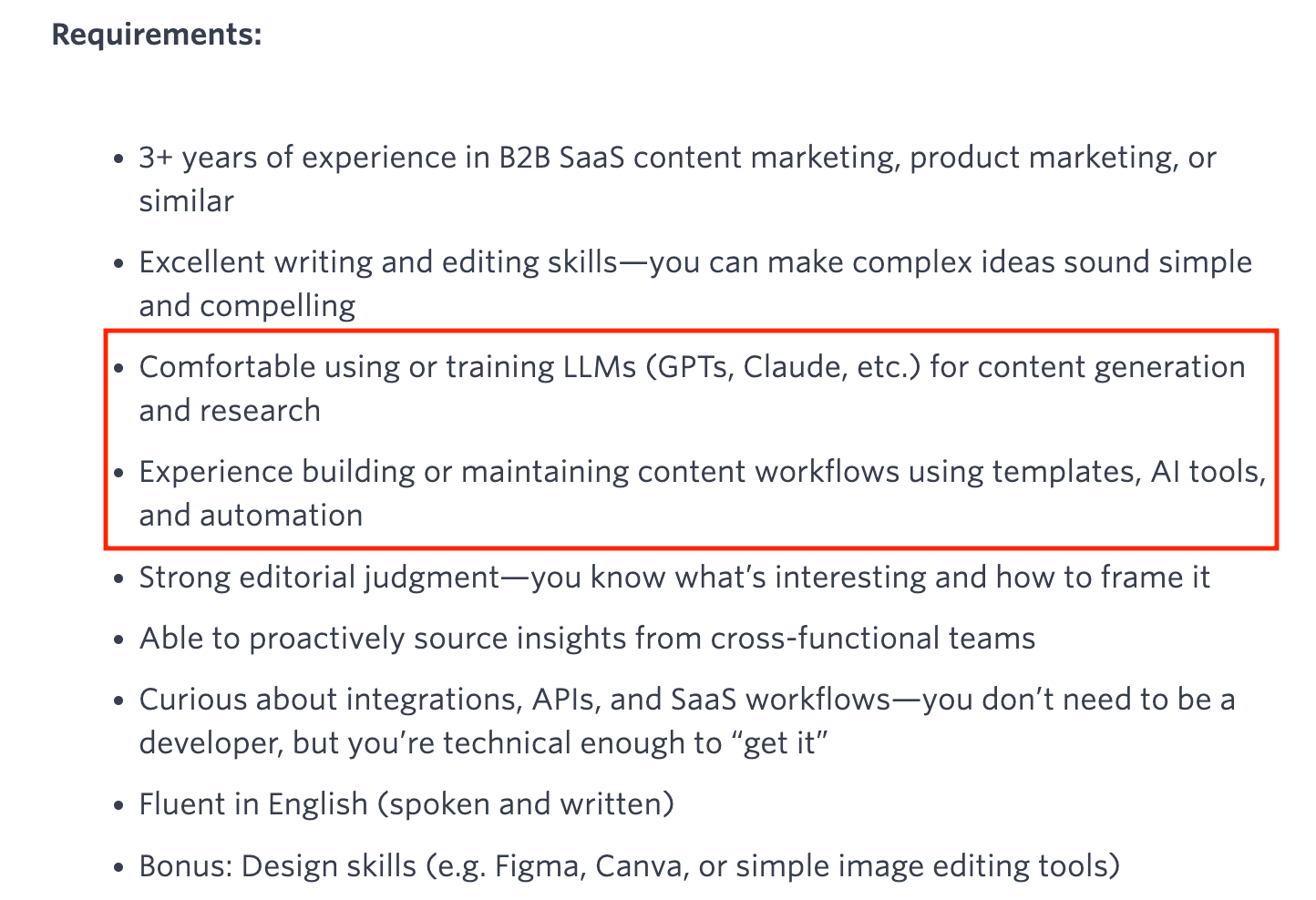
The bottom line: We need to get better at designing and operating efficient content systems powered by today’s technology.
Here’s what it means:
- Building AI and automation workflows that eliminate bottlenecks
- Creating templates and structures that enable consistency
- Designing connections between tools to reduce manual work
- Setting up measurement systems that track what matters
Let’s see how you can approach it.
Start with an audit: Find where you're wasting time
Before you dive into AI tools or automation platforms, get clear on what's slowing you down.
The real bottlenecks often hide in plain sight: disjointed processes, repetitive manual work, and poor communication channels.
1. Audit current team workflows
First, map your content production process from idea to publication.
Break it down by activity: research, writing, editing, formatting, meetings, and administrative tasks like assigning specialists and adding updates to the project management tool.
Then, try to answer these questions:
- What takes the most time in your content process?
- Where does work consistently get stuck?
- Which tasks feel like unnecessary busywork?
- What information is frequently missing when you start?
These conversations reveal the real operational pain points.
For example, I’ve seen teams spending weeks editing a single article, getting stuck in endless revisions, or spending months manually updating blog posts — only to repeat the process again two months later.
2. Assess current AI + automation use
Next, review the tech you're already using.
Catalog everything: the official tools and the shadow tech that team members use independently — from AI chatbots like Claude to workflow automation platforms like N8N.
Map how information flows between these systems. The manual handoffs between tools often create the biggest slowdowns.
Answer these questions:
- Is the content consistently on-brand or generic?
- How much human editing does it require?
- Are you using shared prompt libraries and tools, or is everyone creating their own?
- Which automation workflows actually get used versus sitting idle?
The reality is that most content teams adopt various AI tools and automations without a clear strategy or integration.
For example, individual team members might use AI chatbots like ChatGPT and manage disconnected Google Docs — a setup that often leads to quality gaps and requires extra manual work.
3. Identify bottlenecks
Finally, pinpoint where your content engine loses momentum.
Find error-prone stages and communication gaps that might indicate missing documentation or unclear processes.
The most stubborn bottlenecks I consistently see include:
- Scattered feedback across Slack, email, and document comments
- Lack of content quality and tone of voice guidelines
- Hours spent reformatting the same content for different channels
- Content asset chaos (where are those images/logos/previous articles?)
- Vague briefs that require multiple clarification rounds
- Content stuck in approval limbo with no clear ownership
- Manual analytics assembly from multiple platforms
The outcome?
These areas represent the highest-impact opportunities where AI and automation can transform your workflows.
Build the core content process first
Once you've identified your content bottlenecks, build a structured workflow that addresses them.
Create a repeatable content engine
Your audit revealed where time gets wasted.
Now, you need to build the infrastructure that eliminates those inefficiencies.
Define focus areas for your content
First, map out your priority content types: product-led blogs, SEO-driven content, sales enablement, partner content, etc.
Your process needs to accommodate all of these, but with appropriate variations for each.
If you’re using Relato, create dedicated workspaces for different content categories.
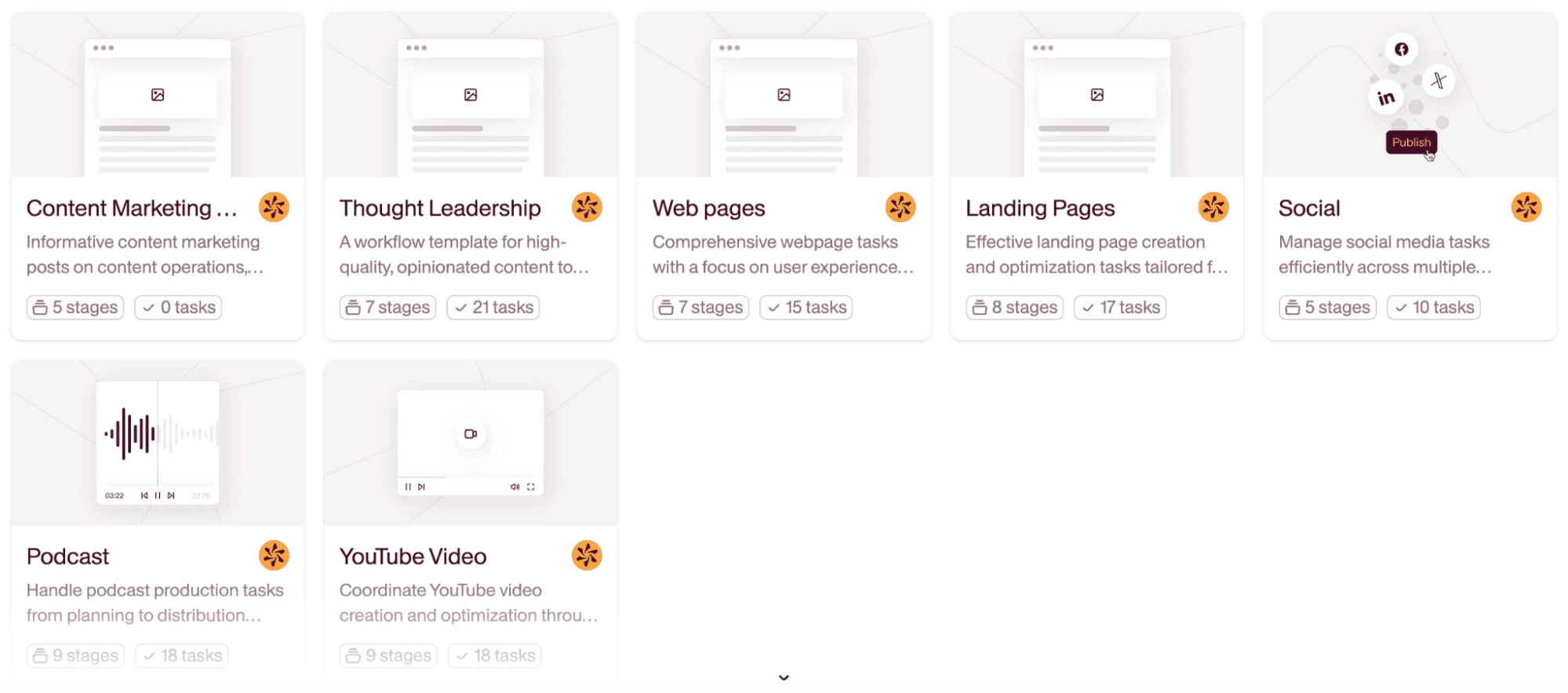
Standardize formats
From here, create templates for recurring content assets: brief templates, SME input forms, outline frameworks, and review checklists.
Make sure that these documents are easily accessible and visible to all team members.
In Relato, upload them to each relevant workspace:
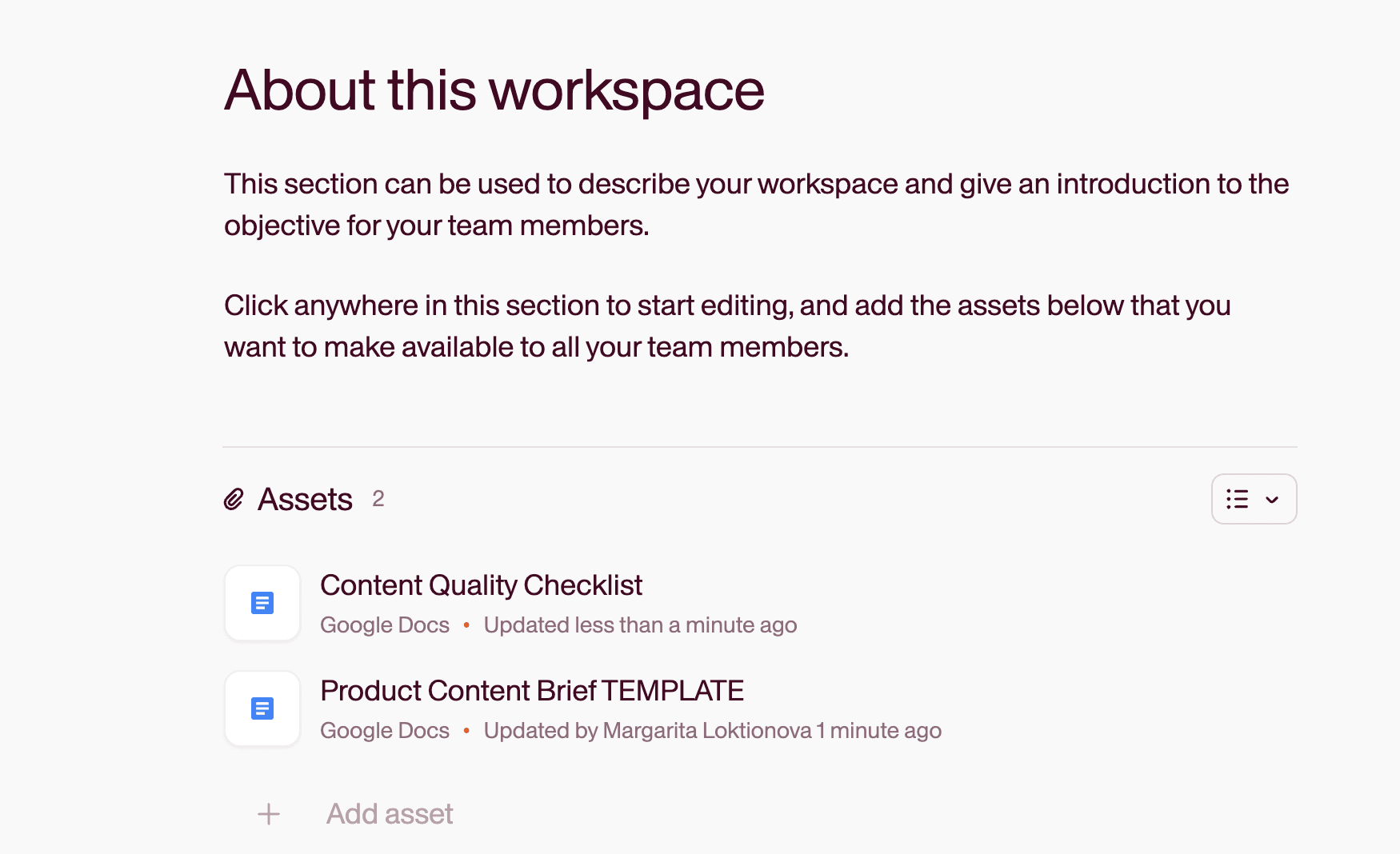
Document processes
Next, create standard operating procedures (SOPs) that detail required inputs, quality standards, review criteria, and publishing steps.
For example:
- Content brief SOP: Who creates briefs, required sections (audience, goal, keywords, CTAs), approval process, and timeline expectations
- Editorial SOP: Style guide application, fact-checking requirements, brand voice guidelines, and common mistakes to avoid
- Review cycle SOP: Maximum review rounds, turnaround time expectations, how to provide feedback, and who has final approval authority
- Publishing SOP: Technical requirements, pre-publish checklist, distribution channels, promotion workflow
You can also store these SOPs directly in Relato’s workspaces:
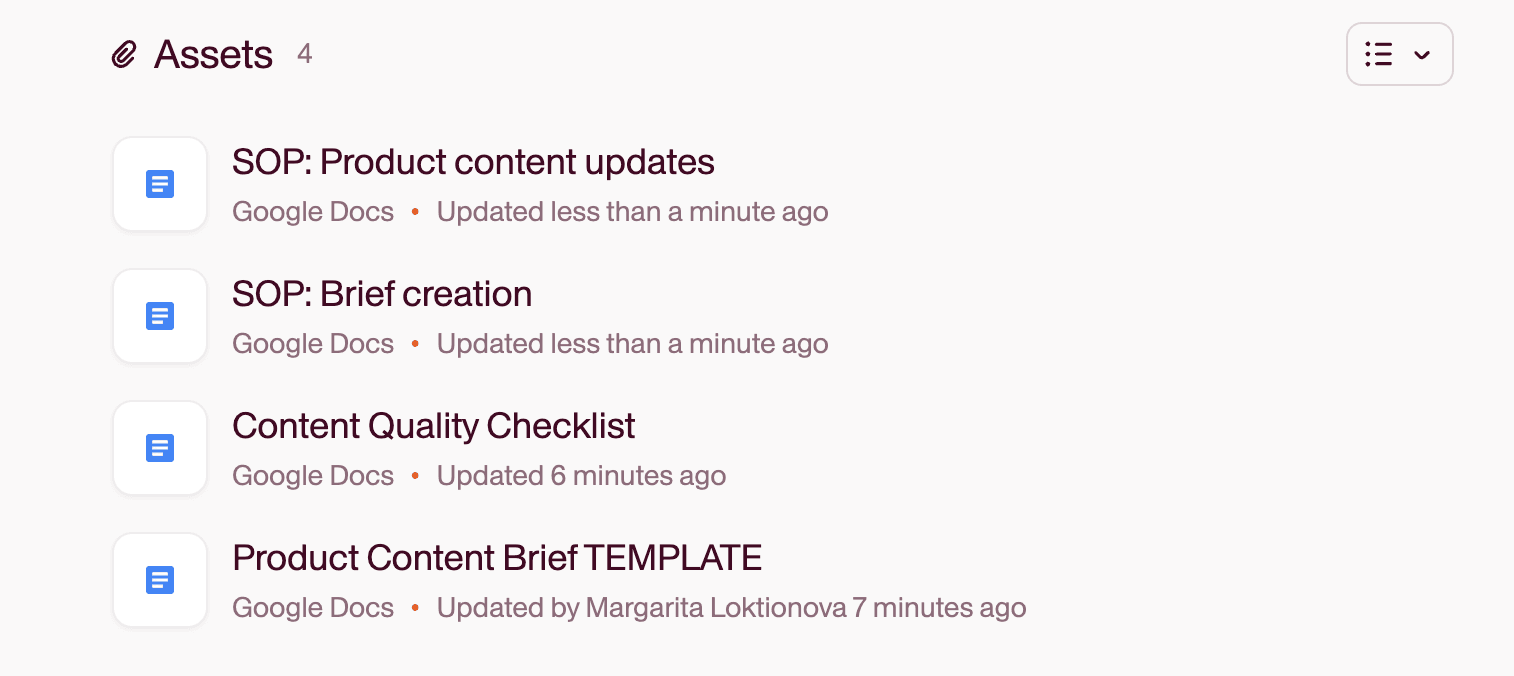
Assign clear ownership
Finally, designate specific owners for each workflow stage.
For example, content strategists and SEO specialists for briefs, writers for drafting, and editors and product marketers for review cycles.
In Relato, use the task management feature to assign these roles and track accountability throughout the process.
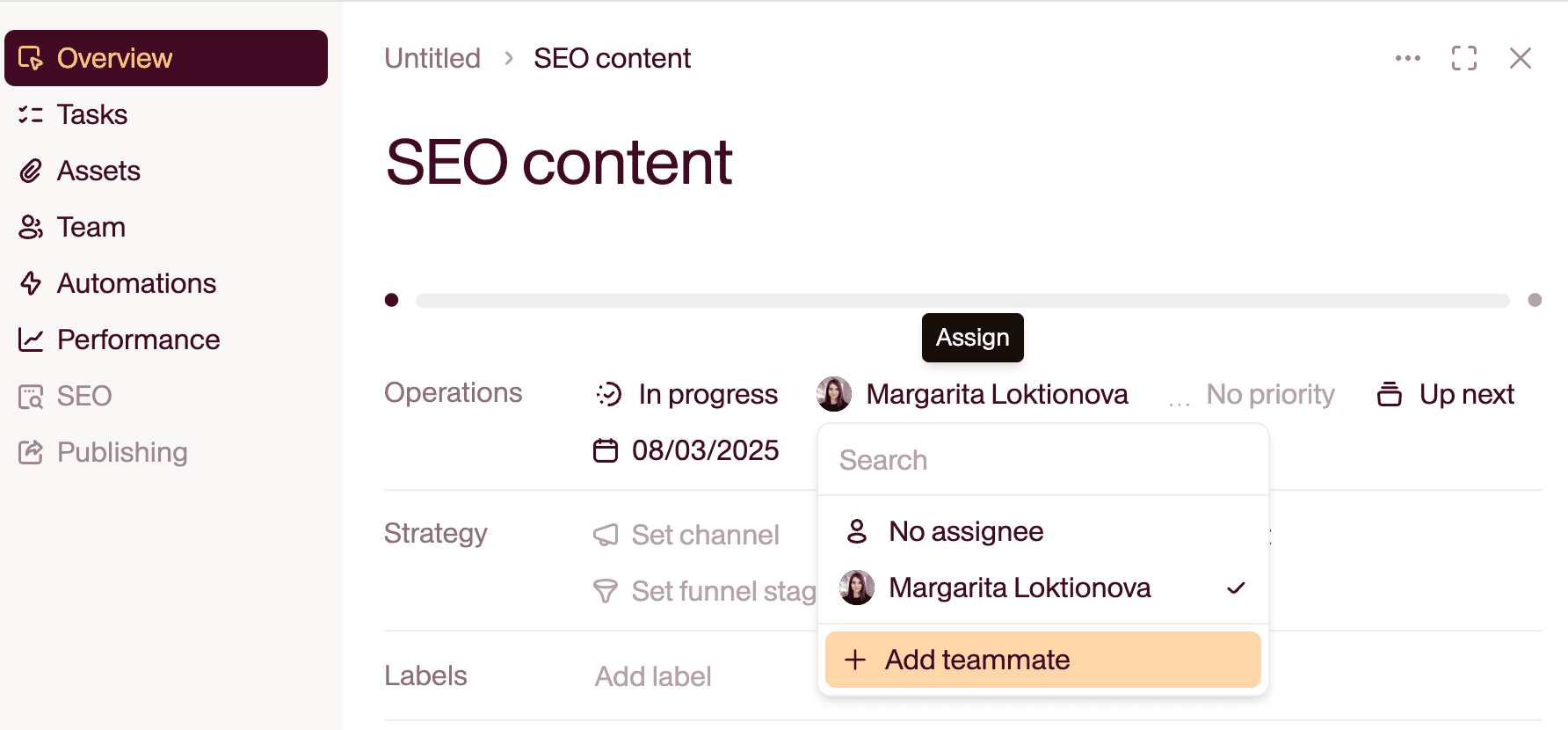
Systemize your workflow and start automating
With these core components in place, build a sequential process that moves content efficiently from concept to completion.
For example:
- Topic planning: Add all topics to your projects for each period (e.g., monthly) with clear deadlines and priority levels.
- Writer and editor assignment: Designate responsible writers and editors for each topic based on expertise and capacity — or, let them pick tasks from a live board.
- Input intake: Capture strategic goals, audience targeting, and tone requirements through features like Relato’s forms.
- Brief creation and SME input: Convert intake information into actionable briefs and upload them to each task.
- Outline approval: Get alignment on structure before full drafting begins.
- Drafting: Have writers create the initial content with access to all previous inputs (briefs, audience information, etc.) and guidelines.
- Editor review: Have editors provide feedback directly on the content and notify the writers by changing the status of the task.
- Final polish: Apply quality control against style guidelines, SEO requirements, and brand standards.
- Publication and distribution: Move the approved content to publishing platforms and activate distribution.
In Relato, you can map such workflows for each project, with clear stages that everyone can see and follow.
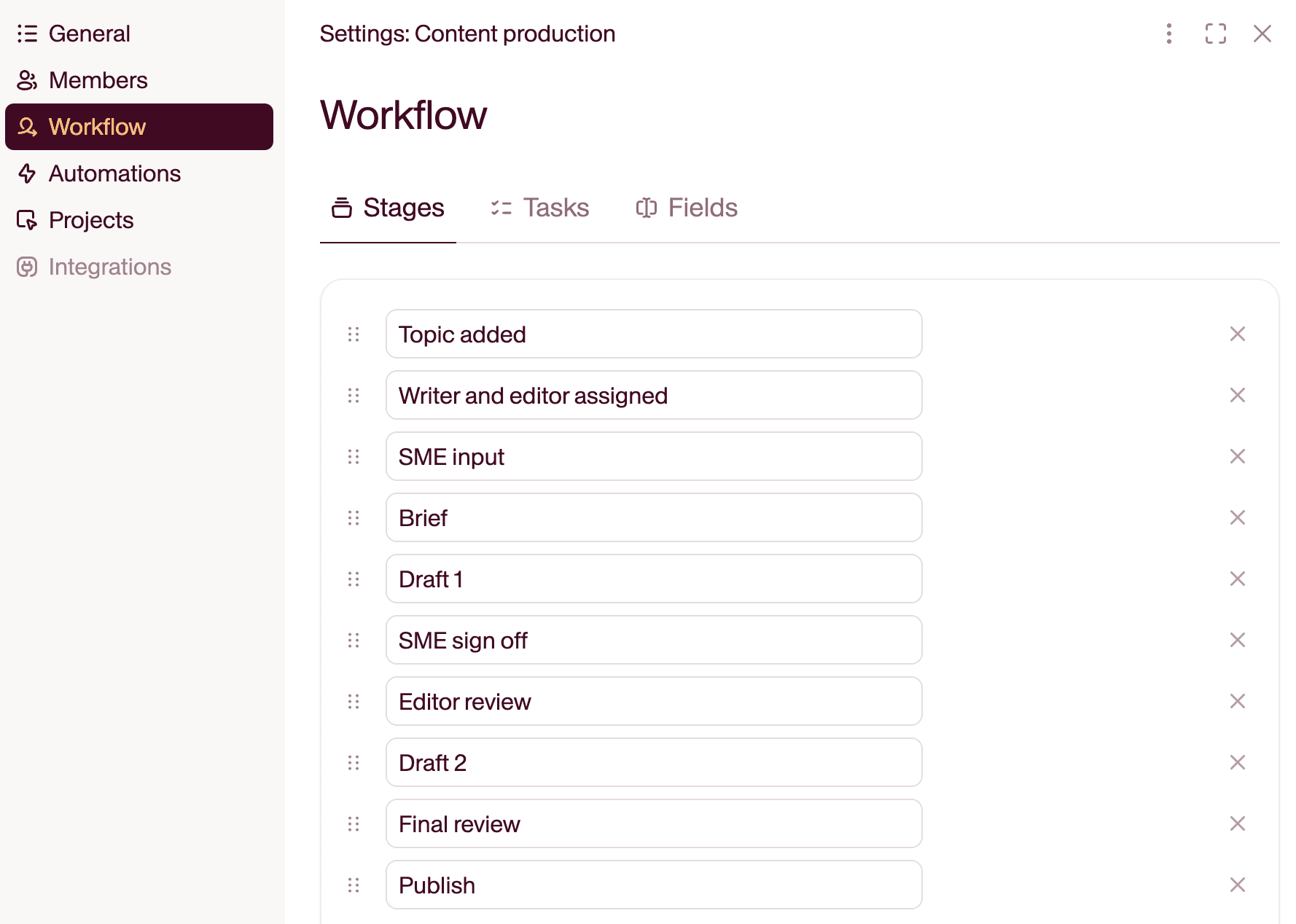
You can then automate repetitive tasks like adding tasks to projects, auto-completing tasks, and adding workspace members.
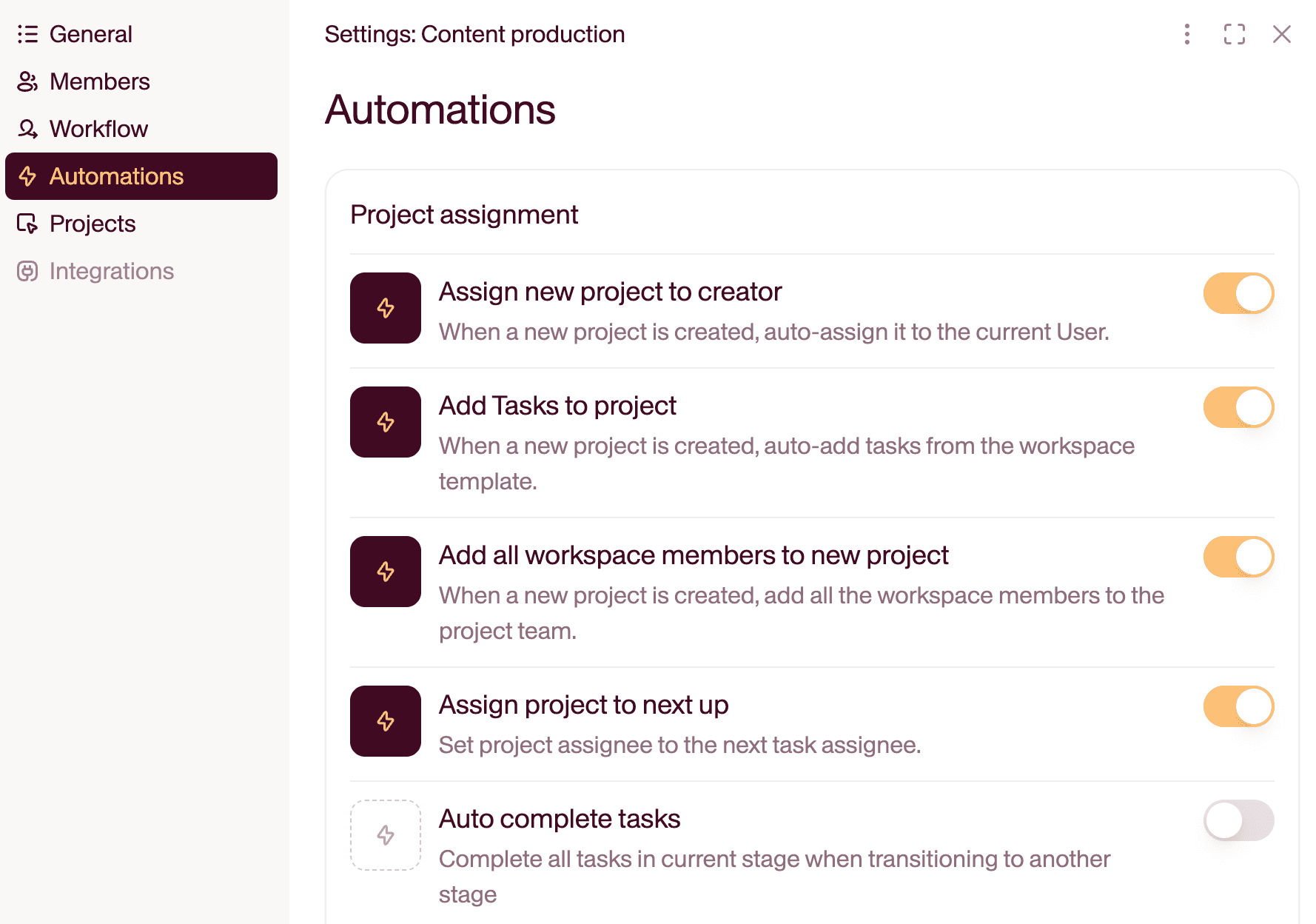
How to add AI to your workflow — the right way
Once your core process is running smoothly, it's time to integrate AI strategically.
Just don’t expect it to do all the work for you.
Here’s how I see it: AI isn't a silver bullet, but it's also not something you can ignore these days.
Maddy shared, “There’s such a duality to AI on multiple levels. The fact that it can take your job, but it can also make your job more enjoyable. Understanding that it’s great for some things but not for others. It’s ok to feel both ways, just don’t let the negatives keep you from figuring out how to work with it for your use cases.”
“AI can take your job or make it better. It’s okay to feel both — just don’t let fear stop you from figuring out how to use it.”
The bottom line is: Strong content operations require both human expertise and technological assistance.
This table from Britney Muller's "Actionable AI for Marketers" course provides a clear guide for where AI can help — and where it falls short:
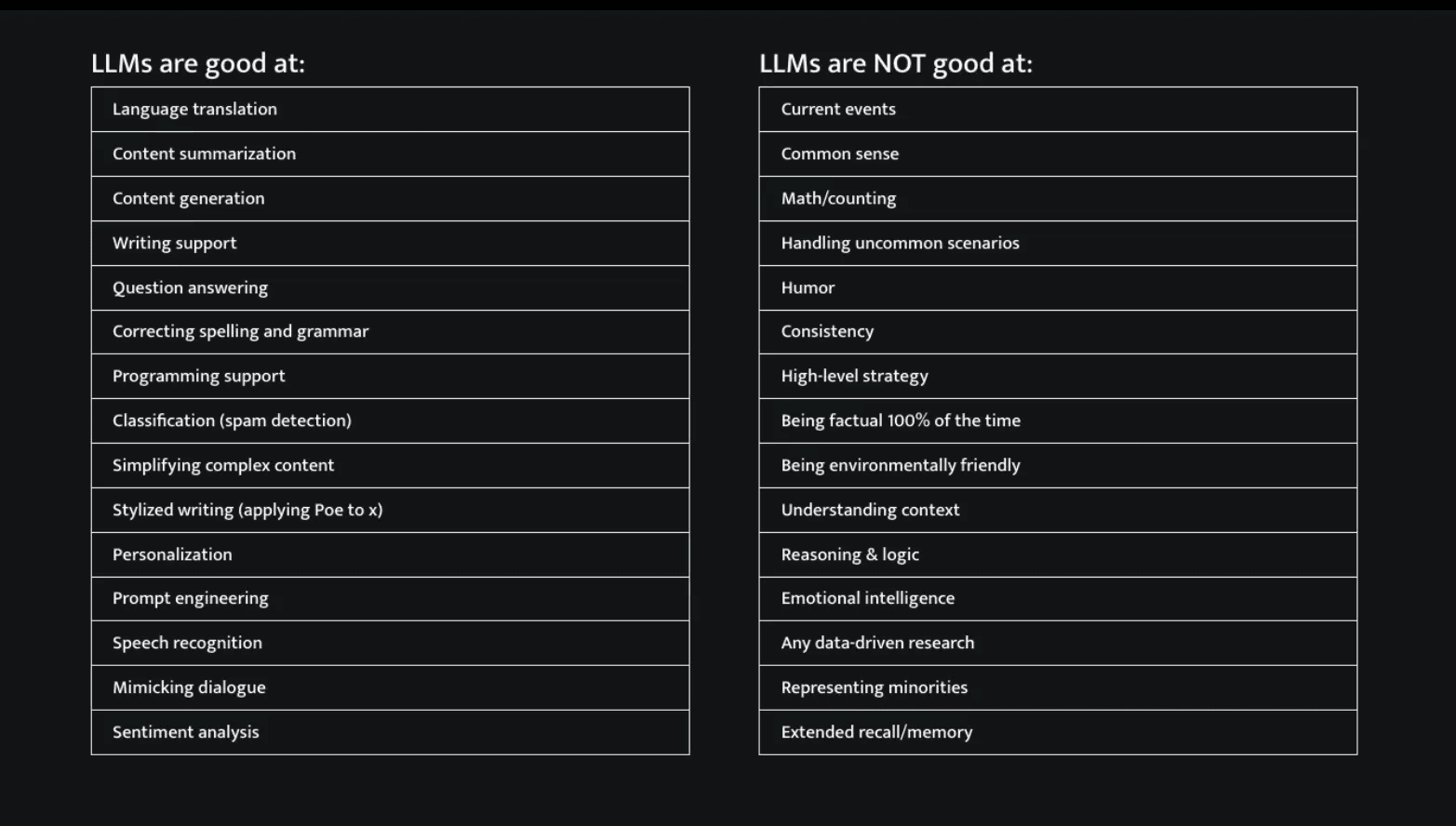
The reality is that AI excels at mechanical tasks like summarization and language processing. But it lacks the contextual awareness and judgment that humans bring.
Maddy admitted, "One of the biggest mistakes I usually witness is trying to use AI to solve problems it's not good at. For example, LLMs are not as great at 'Reasoning & logic' as some might expect! So take care with outsourcing tasks to AI and ensure that there's still human oversight/review if you decide to outsource those tasks anyway."
“One of the biggest mistakes I usually witness is trying to use AI to solve problems it's not good at. ”
And I still feel like many of us don’t fully get it: some businesses want to run everything through AI, while others avoid it entirely.
The truth is somewhere in the middle.
Improve your processes with automation: From briefs to creation and distribution
From here, start designing connected workflows that use AI strategically instead of relying on your team to deploy random, one-off solutions.
Maddy shared, "In my own experience, the first step to AI readiness is accepting that AI is here to stay and not going away. It will become increasingly more integrated with our workflows. Love it or hate it, to stay competitive in today's marketplace, you need to accept it and learn how to use it to create efficiencies and leverage it in your role."
“In my own experience, the first step to AI readiness is accepting that AI is here to stay and not going away.”
Let's explore the specific content stages where automation creates the biggest impact.
Data workflows
The quickest wins come from automating data movement between systems.
This eliminates manual copying, reduces errors, and saves time.
Maddy shared, "One of the best examples is taking data from one platform and automatically sending it to/translating it for another platform. This is where humans tend to get lazy, and transferring data manually can introduce errors unnecessarily."
“One of the best examples is taking data from one platform and automatically sending it to/translating it for another platform.”
For content teams, such data workflows include:
- Research to brief automation: Connecting SEO tools directly to your content planning system
- Analytics to strategy: Automating reporting that pulls metrics into unified dashboards
- Feedback to ideas: Routing customer feedback with specific tags into your content idea repository
- Content to distribution channels: Automatically pushing published content to social media, email, and other platforms
Tools like Zapier, Make, or native integrations can connect these systems with minimal technical setup.
Research
Next, you can automate three critical research tasks to make sure you never miss important insights:
- Competitor monitoring: Track content updates, pricing changes, product launches, and job listings to understand strategic moves.
- Trend tracking: Monitor industry keywords, identify emerging topics, and track audience engagement patterns across publications.
- Social listening: Capture brand mentions, track sentiment, and gather customer feedback.
Maddy recommends setting up automated workflows using tools like Browse.AI to monitor competitor content, Octolens to track mentions, or Zapier to set up custom automations.
I also love using AI builders like Relay that let me build standalone workflows for each task.
For example, this agent runs on a scheduled trigger and sends competitive analysis updates straight to my inbox:
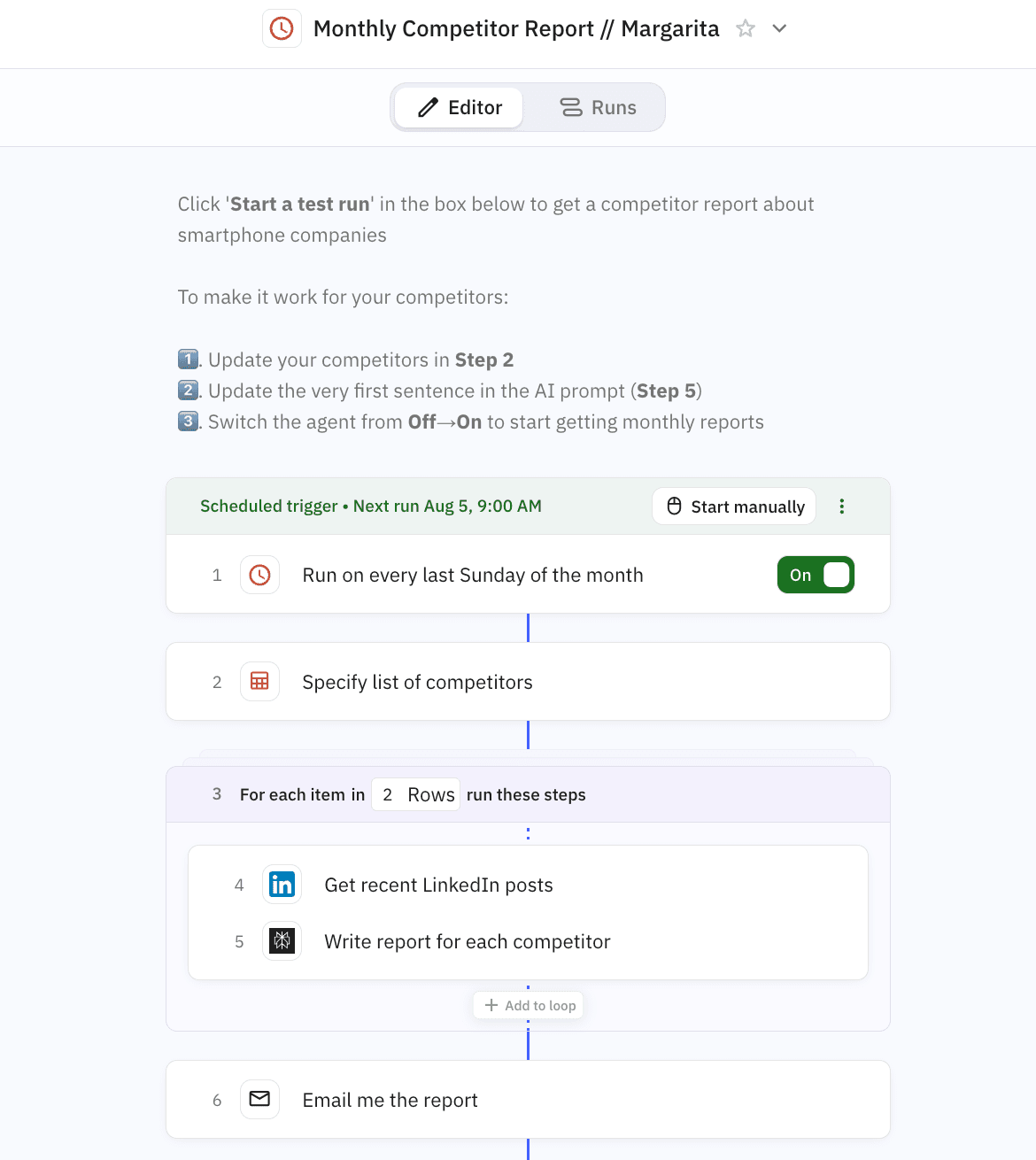
Ideation
Next, use AI tools to find content ideas faster. Here’s what you can automate:
- Topic research: Set up tools to find trending questions in your niche and identify content gaps your competitors haven't covered.
- Audience listening: Create automated workflows that collect content ideas from customer reviews, support tickets, and social media conversations.
- Expert insights: Build systems to extract common questions from sales calls, webinars, and SME interviews.
- Performance patterns: Automatically analyze which existing content performs best to inform future topic selection.
For example, you can use Semrush’s AI Assistant integrated into the main platform to get personalized AI-powered suggestions on what topics to target and where to start.
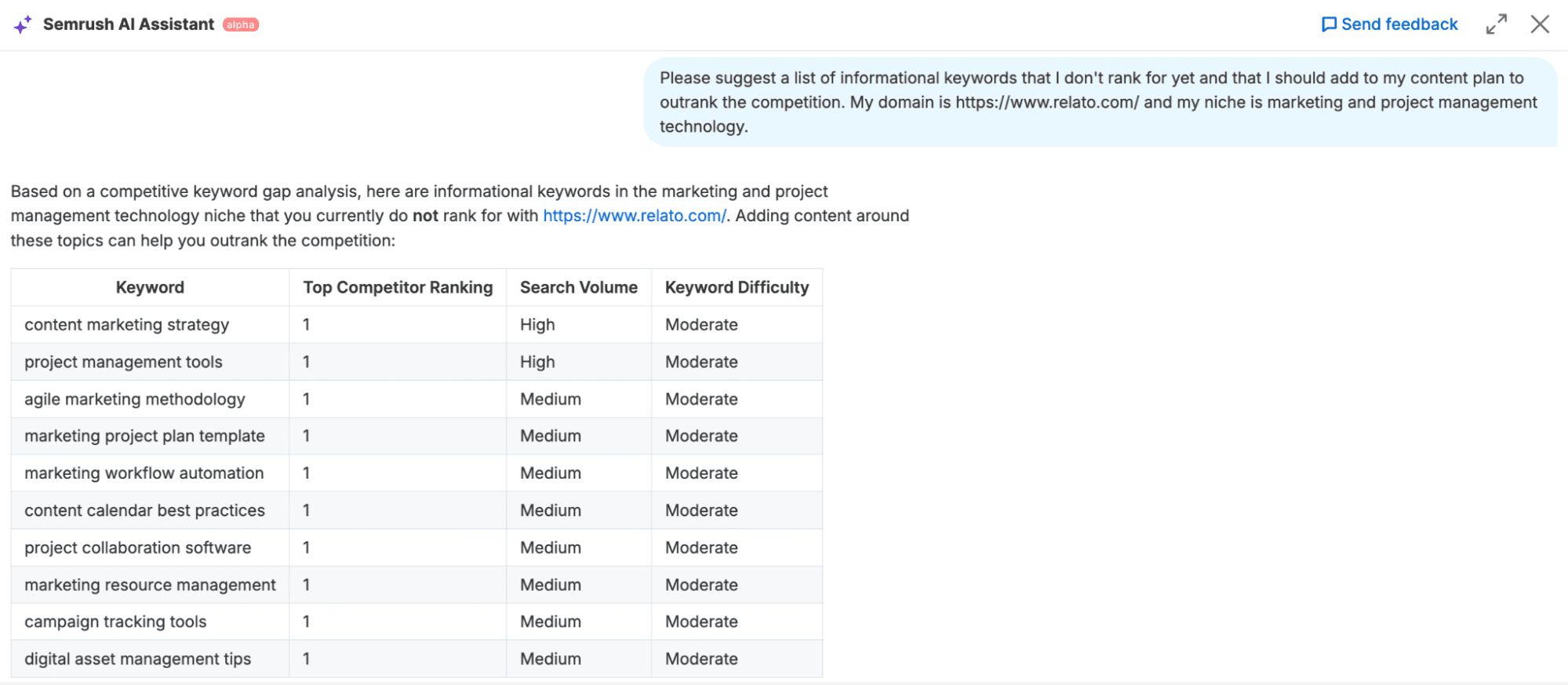
You can also build custom agents with Zapier, Writer, Relay, or another AI tool to build similar workflows:
- Monitoring customer support tickets and automatically adding recurring questions to your content idea board
- Extracting topic suggestions from sales call transcripts and routing them to your editorial calendar
- Tracking industry news sources and generating reports when relevant trends emerge
Content briefs and outlines
Another great way to use AI is to design content outlines and create briefs. For example:
- Meeting transcription: Use AI tools to capture client conversations and SME interviews and integrate them into your briefs.
- SEO-driven structure: Generate data-backed outlines based on what's already ranking for your target keywords.
- Brief templates: Create standardized formats that make sure writers get all necessary information every time.
Maddy added, “We use Fireflies.ai in both client and internal meetings — not just to capture ideas, but to record exact quotes we can repurpose for briefs or even as content, whether by sharing transcripts directly or using them as the foundation for a brief.”
“We use Fireflies.ai in client and internal meetings to capture ideas and exact quotes we can repurpose for briefs or content.”
You can also use AI tools like the SEO Brief Generator in Semrush’s Content Toolkit to automate manual, content-level competitive analysis.
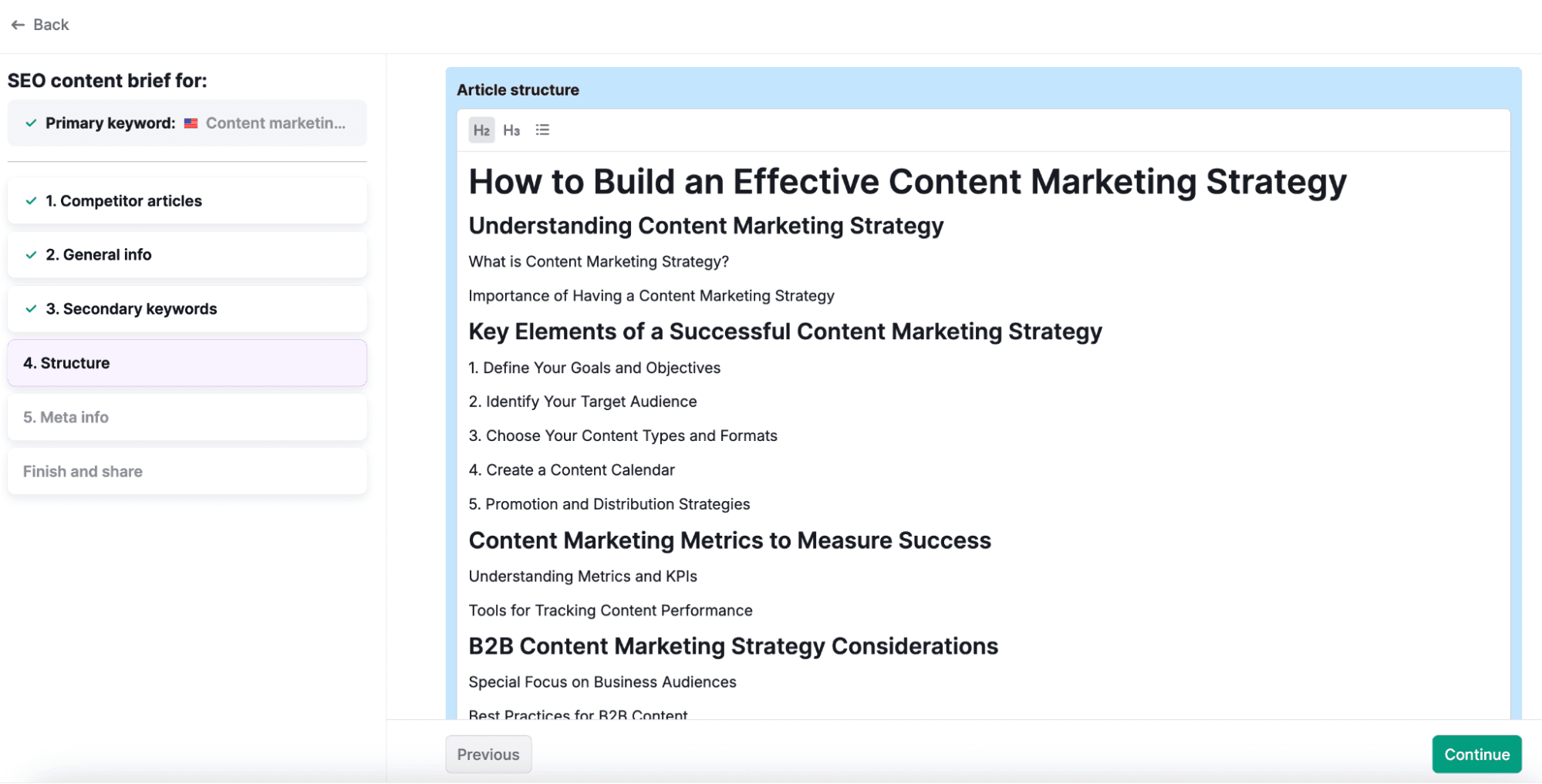
Finally, tools like Writer are great for building custom agents that generate content briefs and outlines in your desired format.
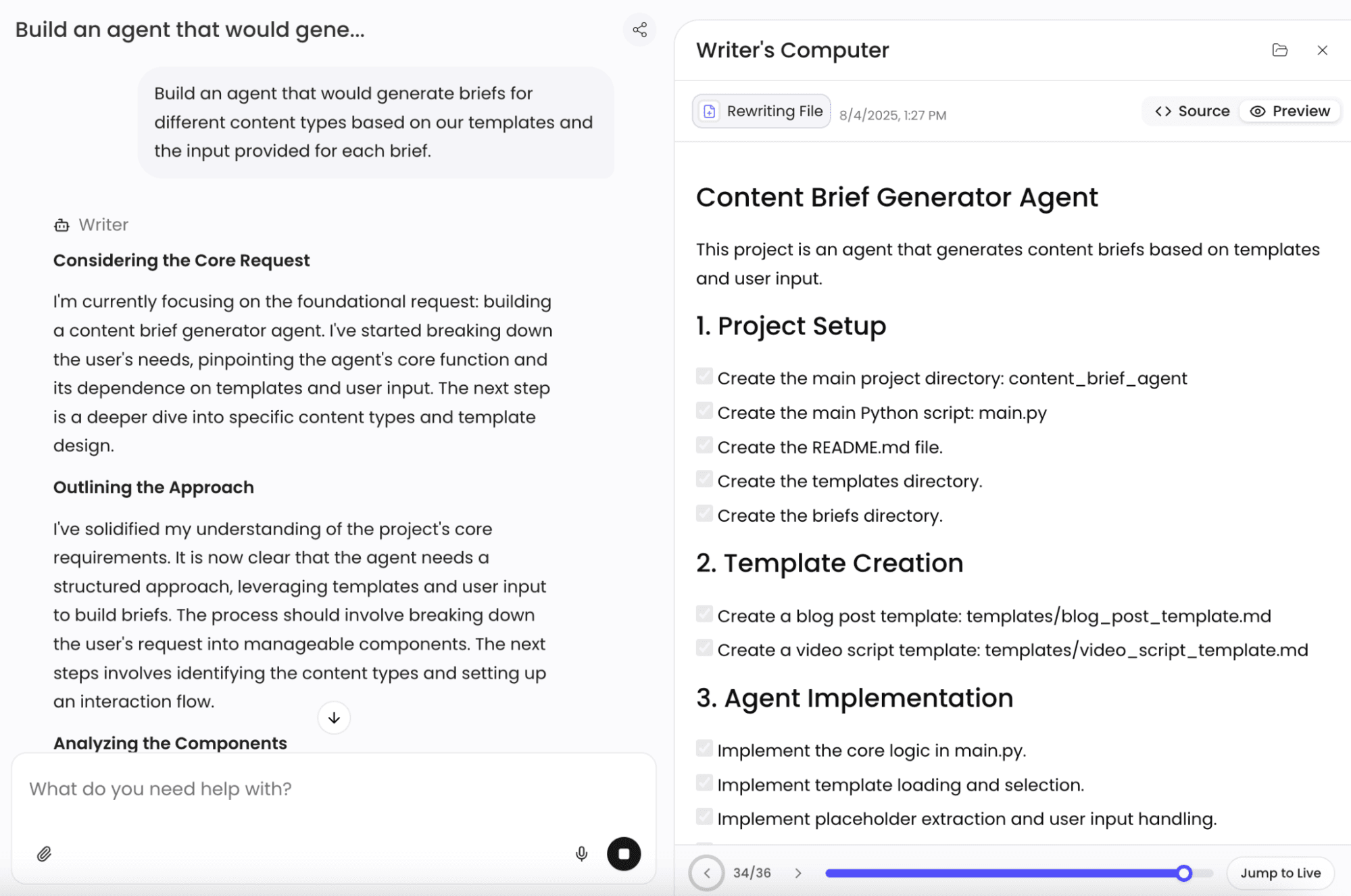
Content creation
Next, let AI handle the actual content production workflows — but never without clear direction and human oversight.
Here’s what you can do:
- First drafts: Generate emails, help center articles, landing pages, etc.
- Component creation: Build specific sections like intros, conclusions, or technical explanations
- Content updates: Use AI to update outdated statistics, examples, and dates
- Repurposing: Turn blog posts into social posts, newsletters into video scripts, etc.
- Personalization: Create tailored content versions for different audience segments
For example, Maddy built a Zapier agent that searches for trending industry news each morning, analyzes relevant articles, and generates brand-compliant social posts delivered straight to her team's Slack channel.
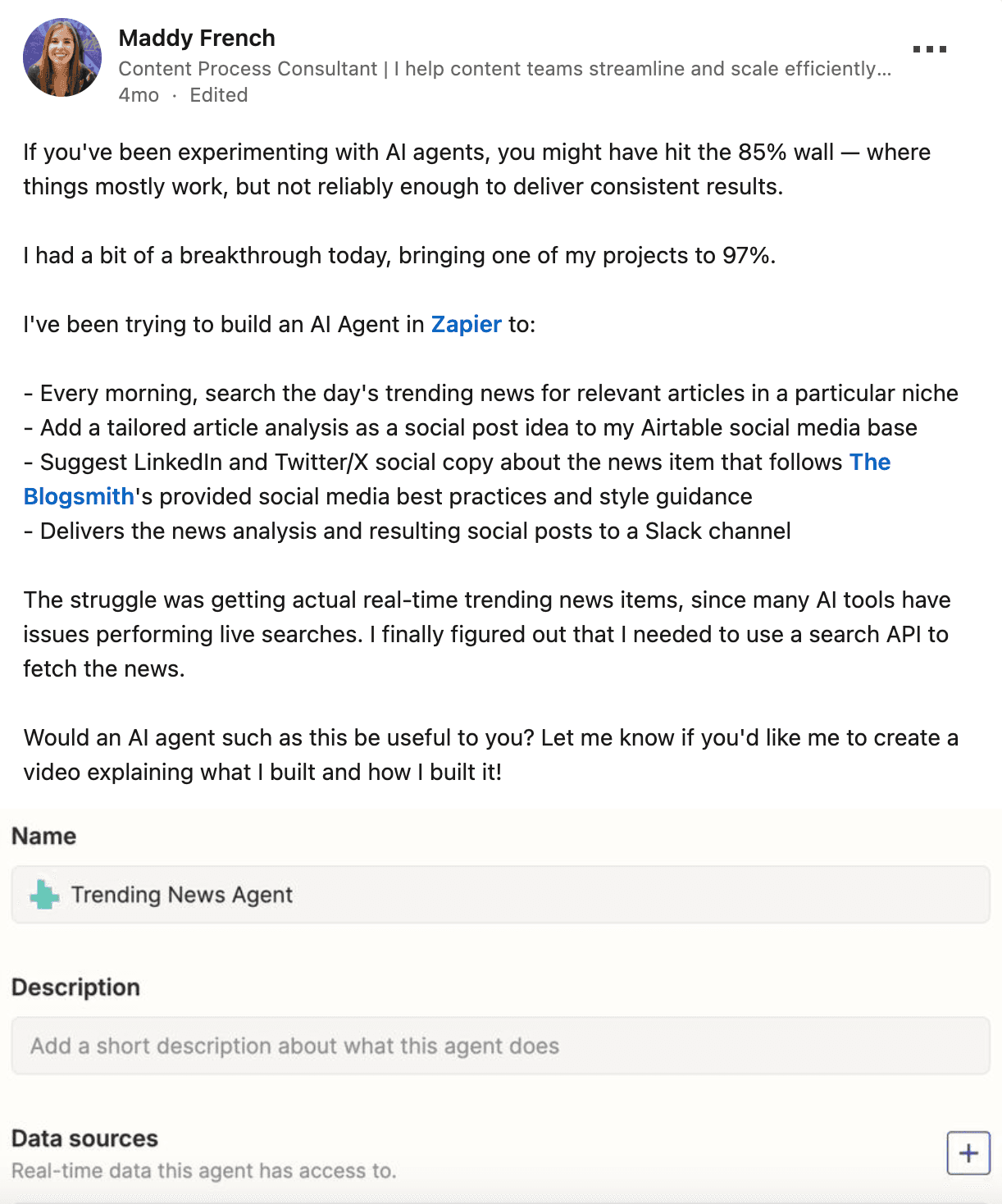
That being said, when it comes to creating long-form content like thought leadership articles, there are still limits to what AI can do.
And yet, I’ve never worked as fast as I do now.
For instance, I’ve set up specialized projects in Claude and ChatGPT for each type of long-form content I work on — each with its own guidelines and best practices.
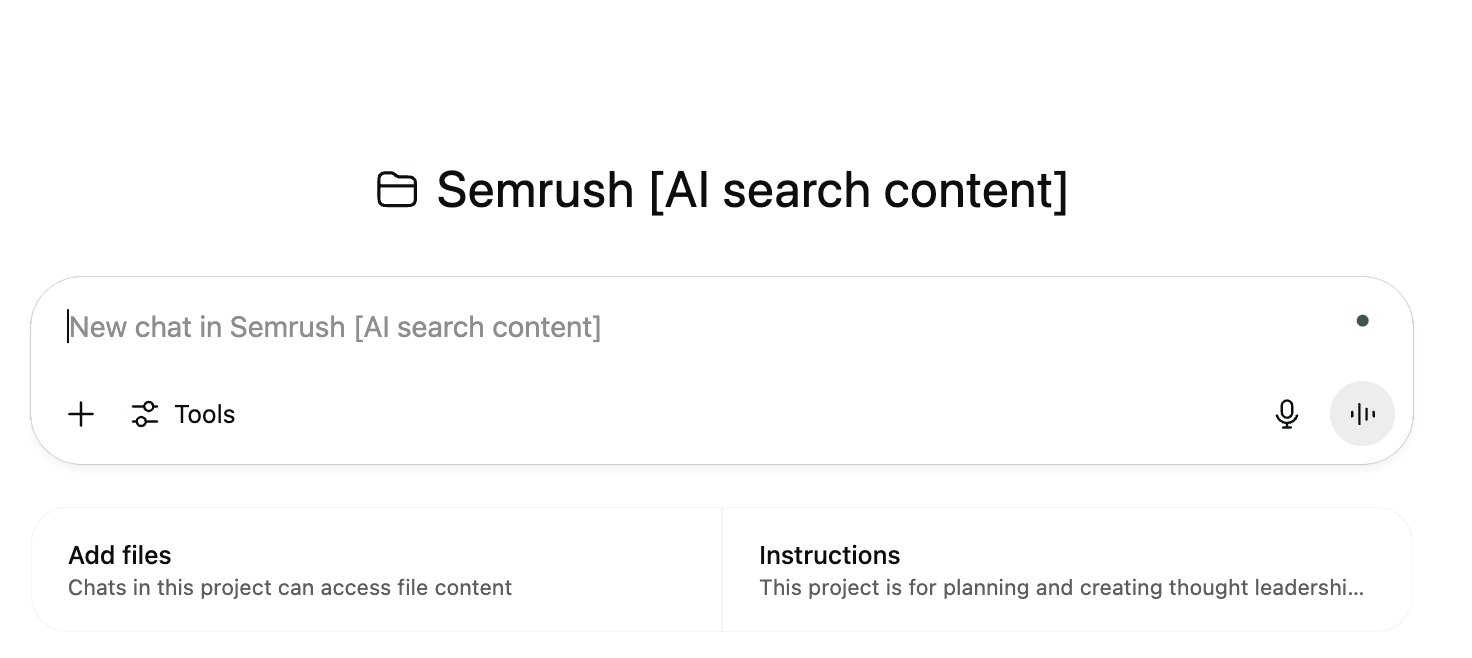
I also build custom GPTs to support various stages of the content production process: from structuring help center articles to transforming blog posts into LinkedIn thought leadership.
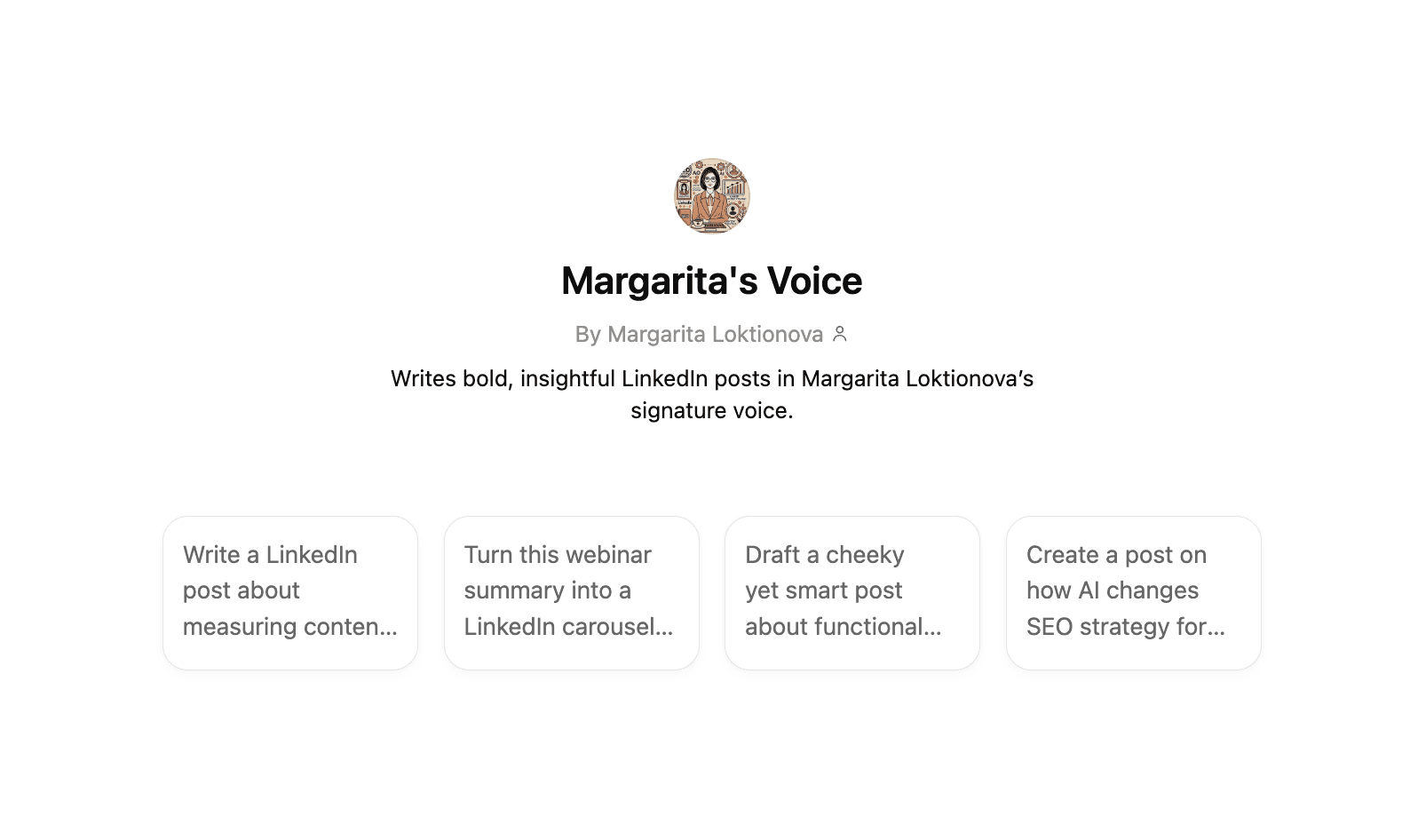
Content editing and optimization
You can also automate the editing process to maintain consistent quality while reducing manual review time:
- Grammar and style checks: Use tools like Grammarly to catch spelling errors and ensure consistent brand voice across writers.
- Formatting automation: Convert content to match requirements for specific platforms, LLMs, or even voice assistants.
- SEO optimization: Automatically check content against ranking factors and suggest improvements.
- Schema generation: Create structured data markup for content to improve search visibility.
Maddy added, “Sometimes the best foundation is a solid, repeatable process. We use project management tools to store our workflows and apply conditional logic to adjust them based on the client, content format, and other variables. For example, our editors follow several specific steps — such as completing a quality control checklist — before we finalize an assignment and deliver it to the client.”
“Sometimes the best foundation is a solid, repeatable process.”
AI platforms like Writer also let you design custom agents for granular tasks, such as generating FAQ sections for long-form content or product pages.
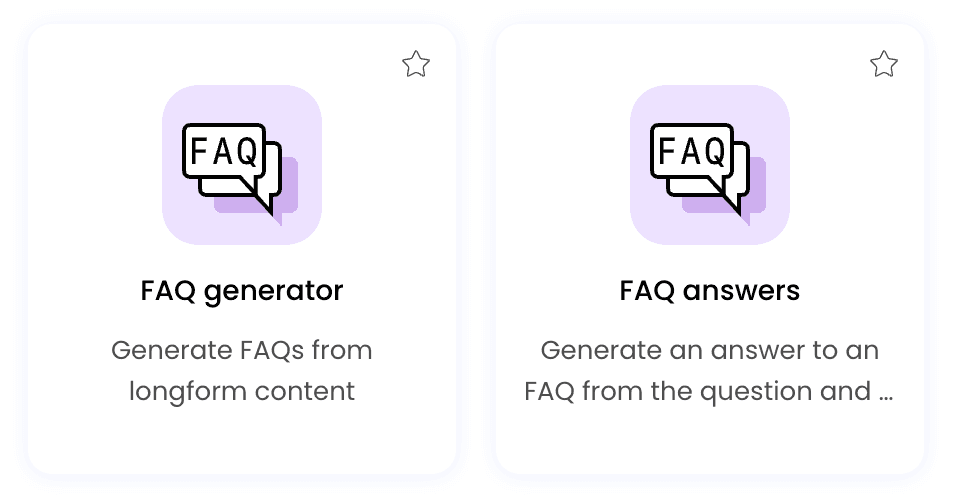
Planning marketing workflows and connecting the dots
Finally, the real power of AI isn't in automating individual tasks.
It's in connecting everything into end-to-end workflows.
These automated systems can be built for any repeatable, routine marketing activity: campaign development, product launches, event promotion, sales enablement, etc.
For example, you can use Writer (or a similar tool) to build an agent that takes an initial brief and generates a full-fledged campaign plan with all the assets:
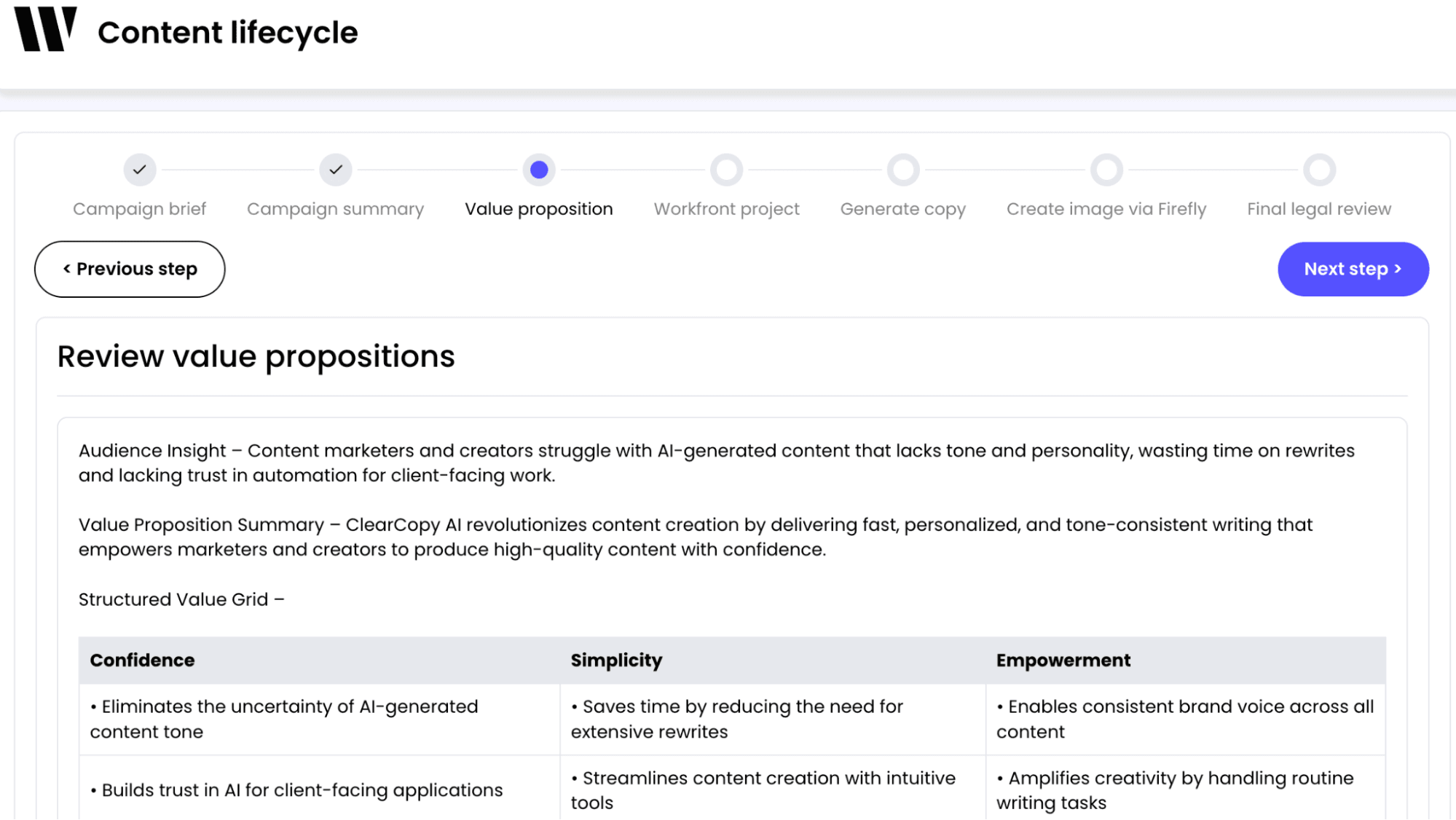
Final take: Focus on practical results
The AI content hype cycle can be exhausting.
One week it's "AI will replace all writers!" and the next it's "Actually, AI content is terrible and everyone can spot it."
The truth?
AI is just another tool in your stack. The smart move is focusing on where it actually helps — without getting caught in either extreme.
Here’s what consistently works:
- Start with the workflows, not the tools. Define what you want to create and why first. Then find tech that fits those specific needs.
- Use content ops tools like Relato to organize production processes, store all docs, and assign clear roles. A central workspace eliminates confusion and speeds up collaboration.
- Learn by doing and practice. There's no substitute for hands-on experience with different automation tools and setups. The fastest path to a working system is through experimentation.
- Always have a balanced mix of AI and human input. Each brings different strengths to the table. Great content needs both.
- Add feedback loops to refine prompts and logic. What works today might not work tomorrow. Build in time to review and improve your automation regularly.
- Measure the effectiveness of your content automation effort. Check whether your AI tools actually get used. Even the most powerful automations deliver zero value if your team abandons them after a week.
Bonus: Resources to level up your content automation skills
Maddy and I recommend these learning materials if you want to go deeper:
- Relato’s content templates: Ready-to-use templates for content planning, production, and measurement
- The Content Operator newsletter: Weekly insights on smoother workflows and smarter content operations
- Actionable AI for Marketers: Solid foundation with practical applications
- Dr. Jules White's Vanderbilt AI courses on Coursera: Excellent for prompt engineering and AI agents
- HuggingFace's courses: For those ready to tackle advanced AI topics
- N8n's YouTube tutorials: Step-by-step guides for building AI automations:
- Morten Rand-Hendriksen's LinkedIn Learning: Approachable technical AI content
- Nat Eliason's Build Your Own Apps with AI course: Practical applications without unnecessary complexity